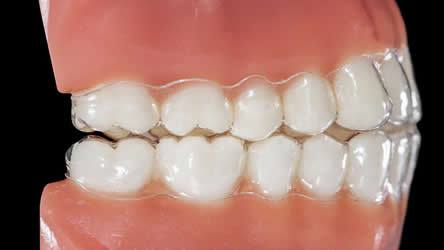Bite Alignment
Misaligned Bite
Class I - A malocclusion where the bite is okay and the top teeth line up with the bottom teeth, but the teeth are crooked, crowded or turned.

Open Bite
Anterior open bite refers to a condition in which the top and bottom front teeth are not in contact (they do not touch each other when the patient bites). The origins of open bites can be traced to habits that patients have or had in the past and occasionally to discrepancies between the sizes of the jaws. Since most open bites in children are associated to an existing habit, treatment usually addresses the habit itself and is most effective when done at an early age. Many appliances are available for treating this condition, and your dentist will discuss in detail the risks and benefits of treating an open bite in children.

Over Bite
Class II - A malocclusion where the upper teeth stick out past the lower teeth commonly referred to as an "over bite," "over jet," "deep bite" or "buck teeth."

Under Bite
Class III - A malocclusion where the lower teeth stick out past the upper teeth called an "under bite".

Posterior Cross Bite
A posterior cross bite can appear at an early age; and depending on its cause (mal-positioned teeth or misaligned jaws,) treatment may be warranted early. It can involve one or both sides of the molar area and in some cases it can cause a "shift" of the bite. Many appliances are available for treating the condition. Your dentist will discuss in detail the risks and benefits of treating a posterior cross bite.

Anterior Cross Bite
Anterior cross bites occur when the upper front teeth are inside of the lower front teeth. Over time, the lower jaw grows into a forward position abnormally, thus inhibiting the growth of the maxilla (roof of the mouth or upper jaw). Once the source of the interference causing the cross bite is eliminated, the appliance guides the maxilla back into position. The front of the appliance is moved outward through the tension of an expansion screw at the base of the unit while the back teeth are used for anchorage.

Closing Gaps
When closing a diastema (gap between teeth), differing amounts of movement of the two teeth is often needed. In this application, coil springs are placed to the side of each tooth. An arch wire acts as a guide and keeps the teeth from tipping as the space is closed.
